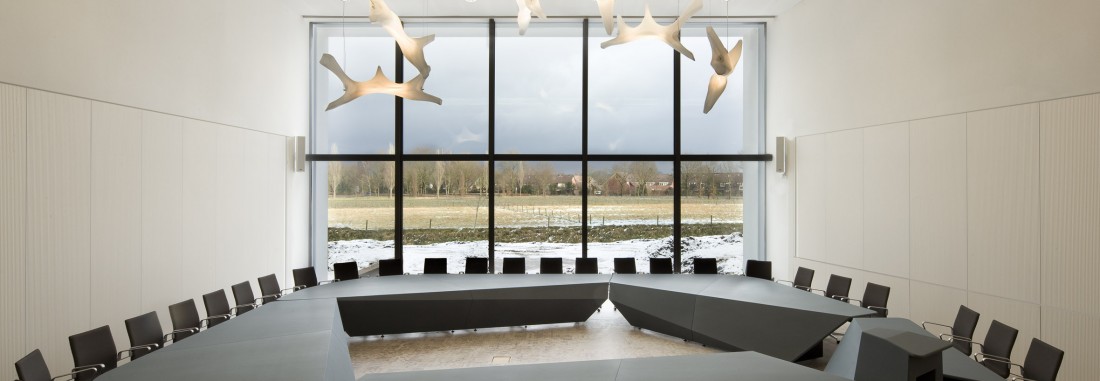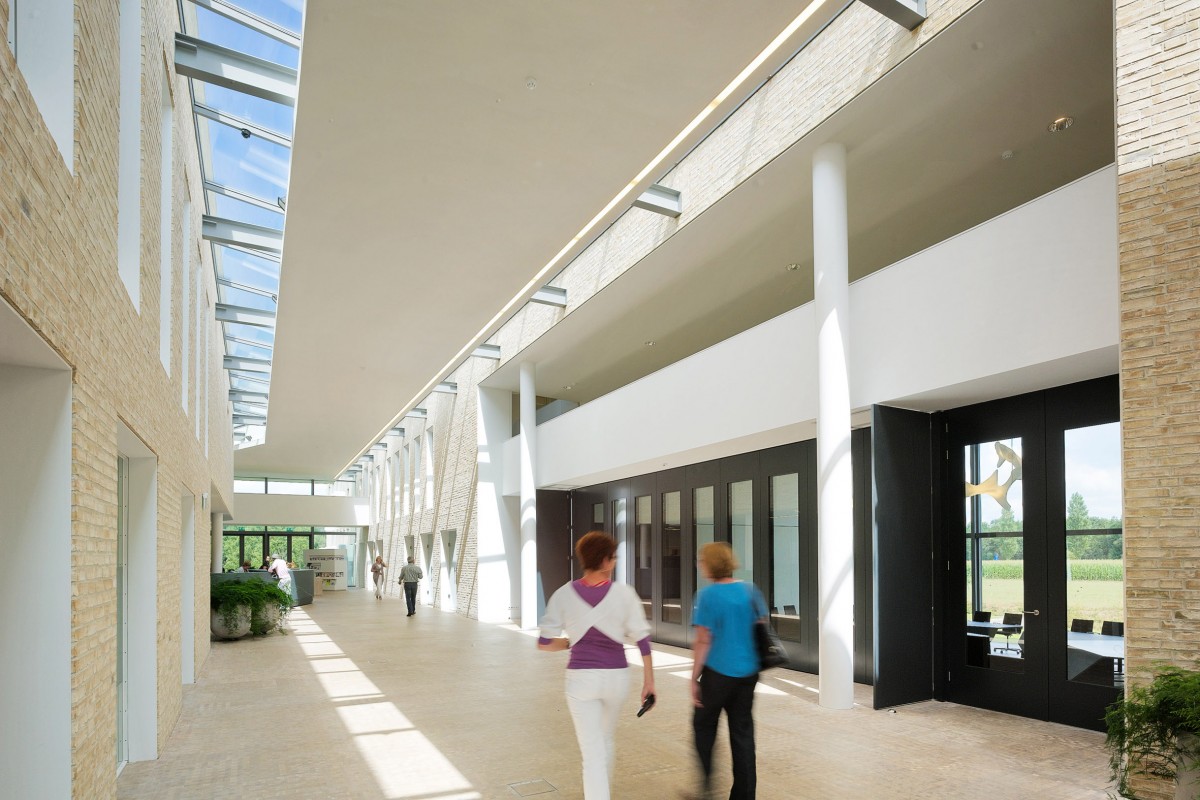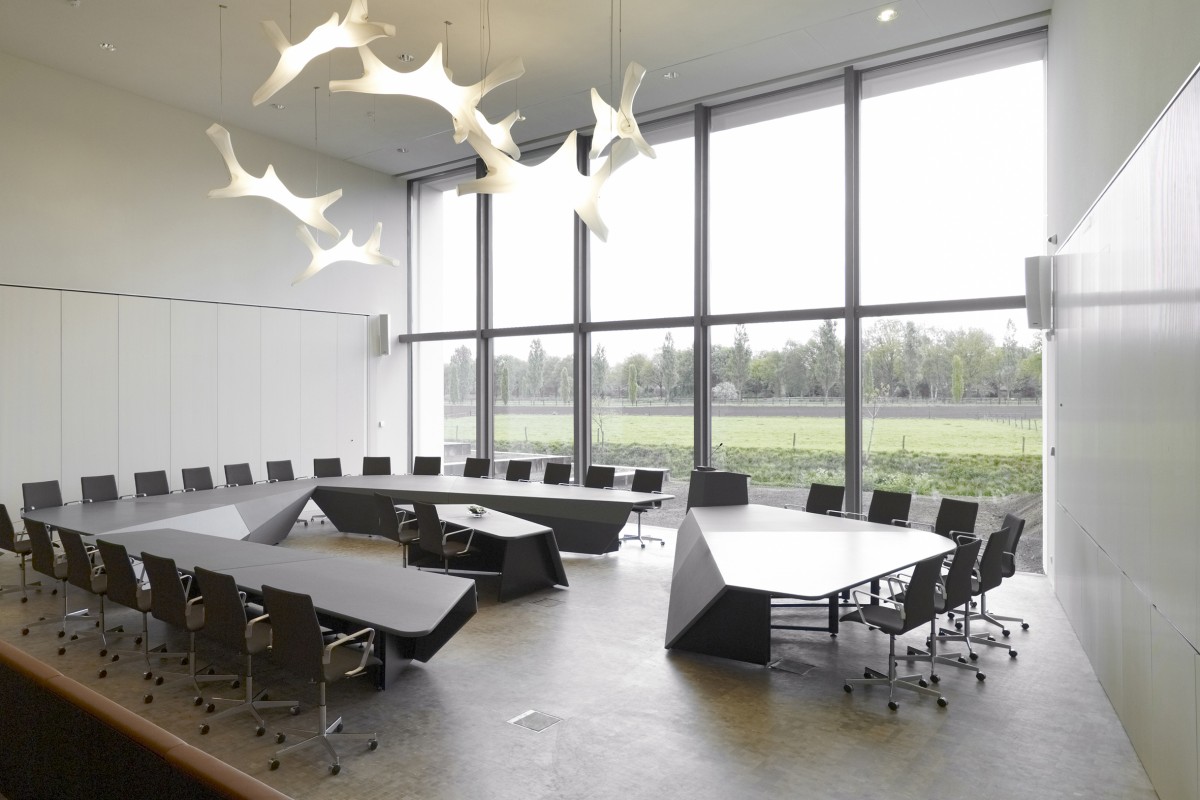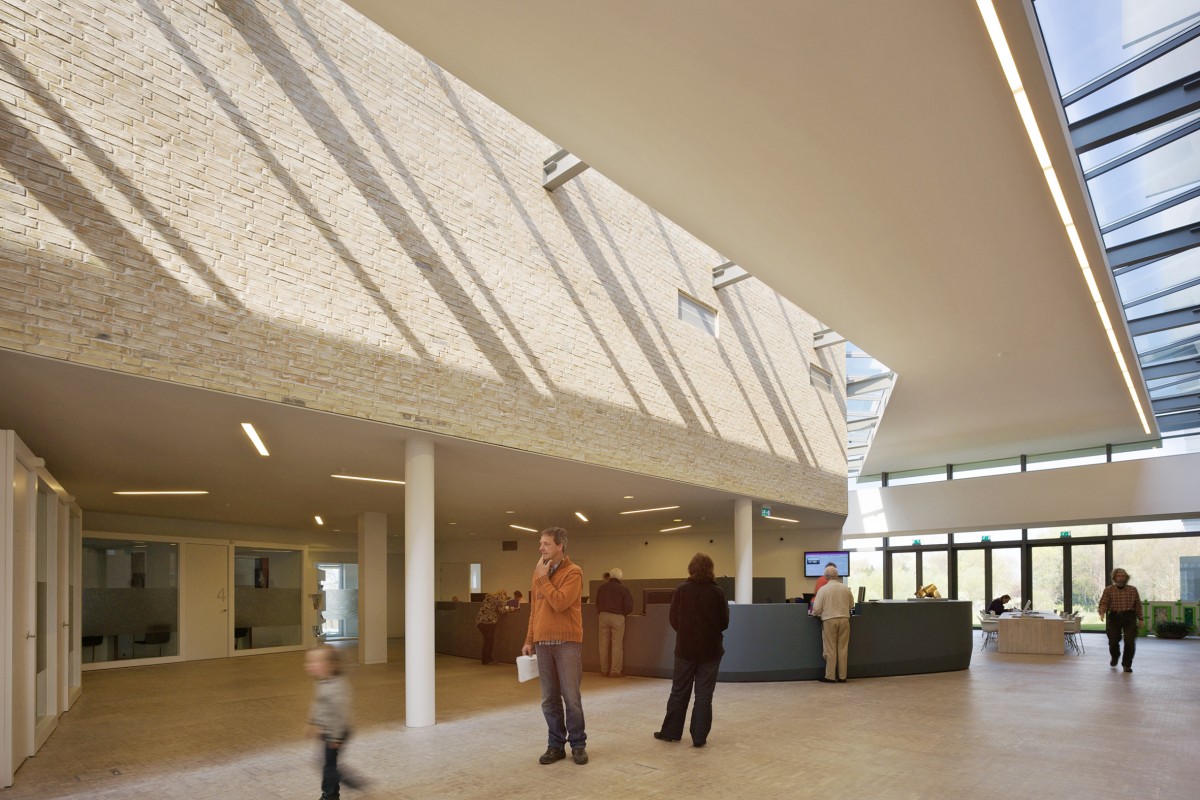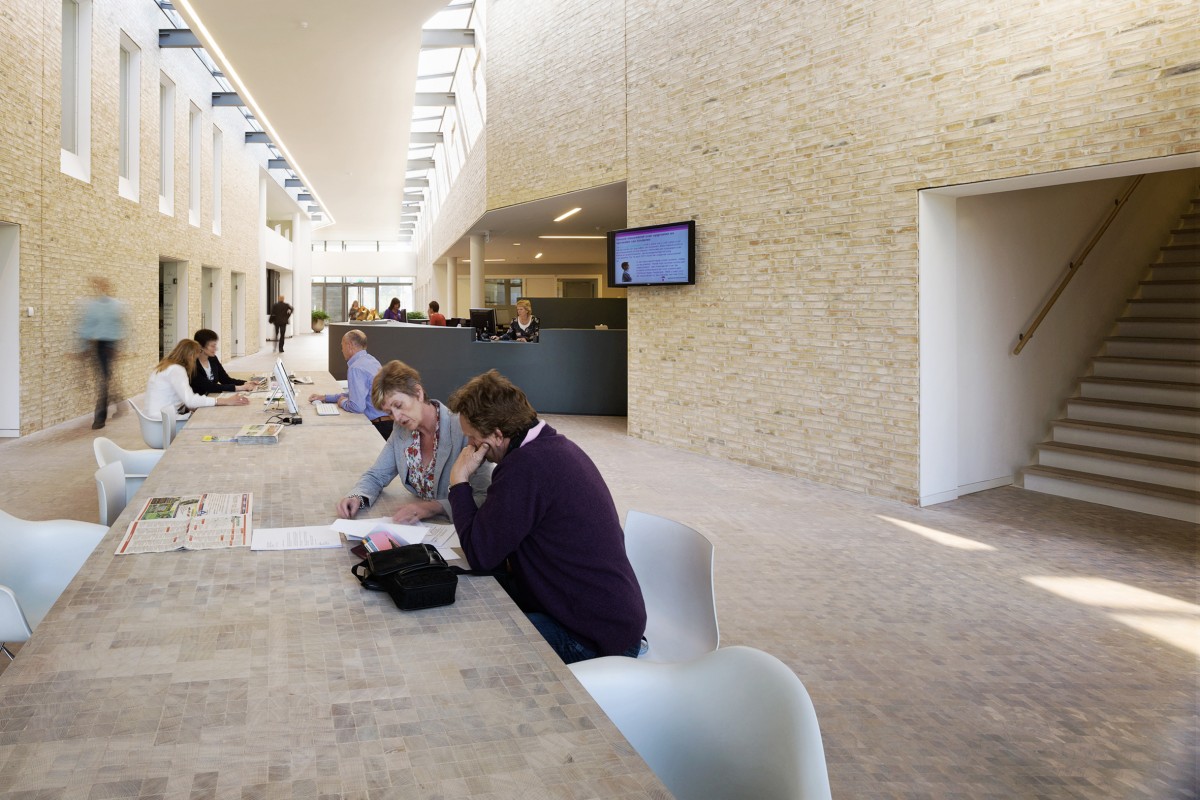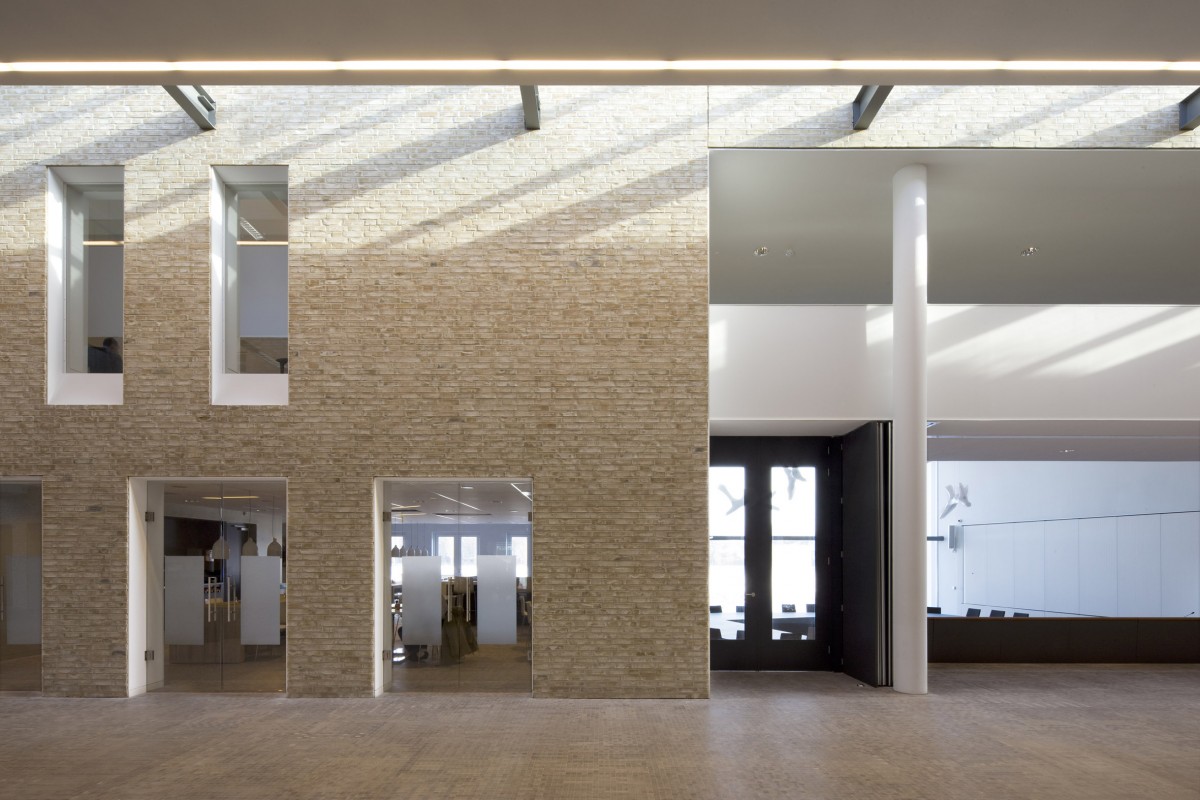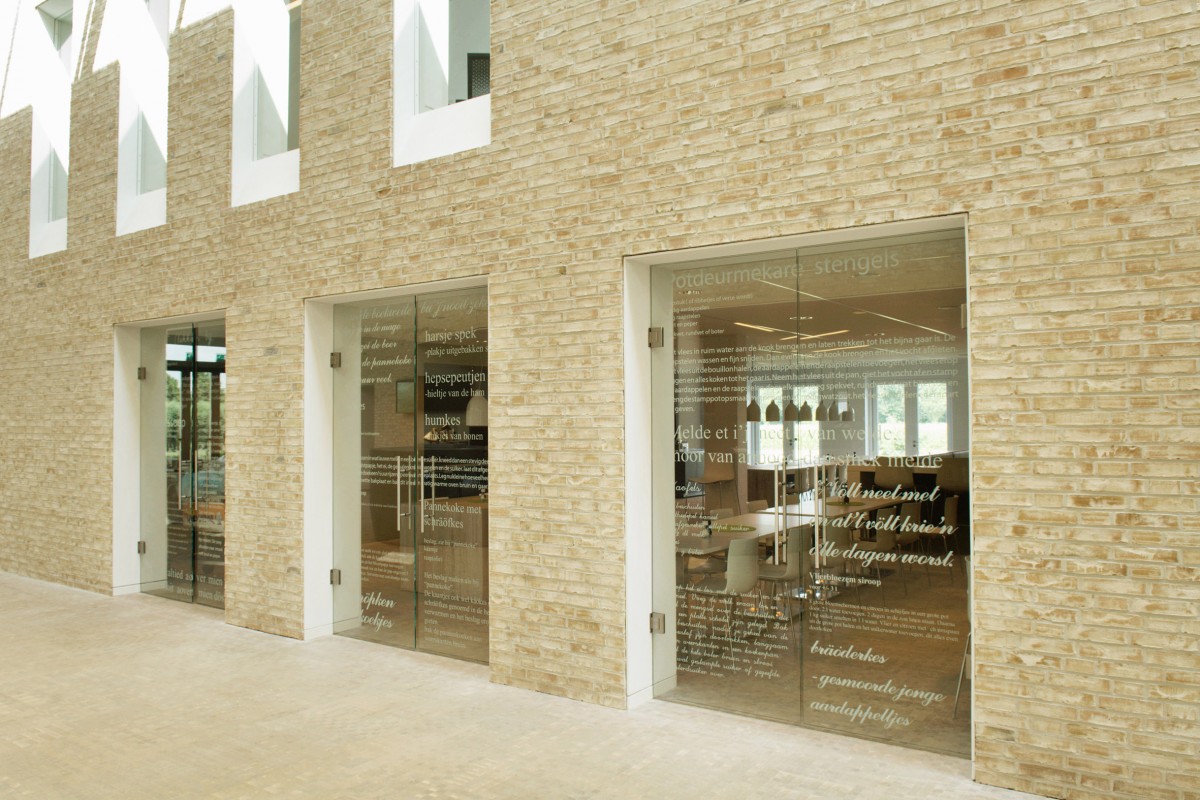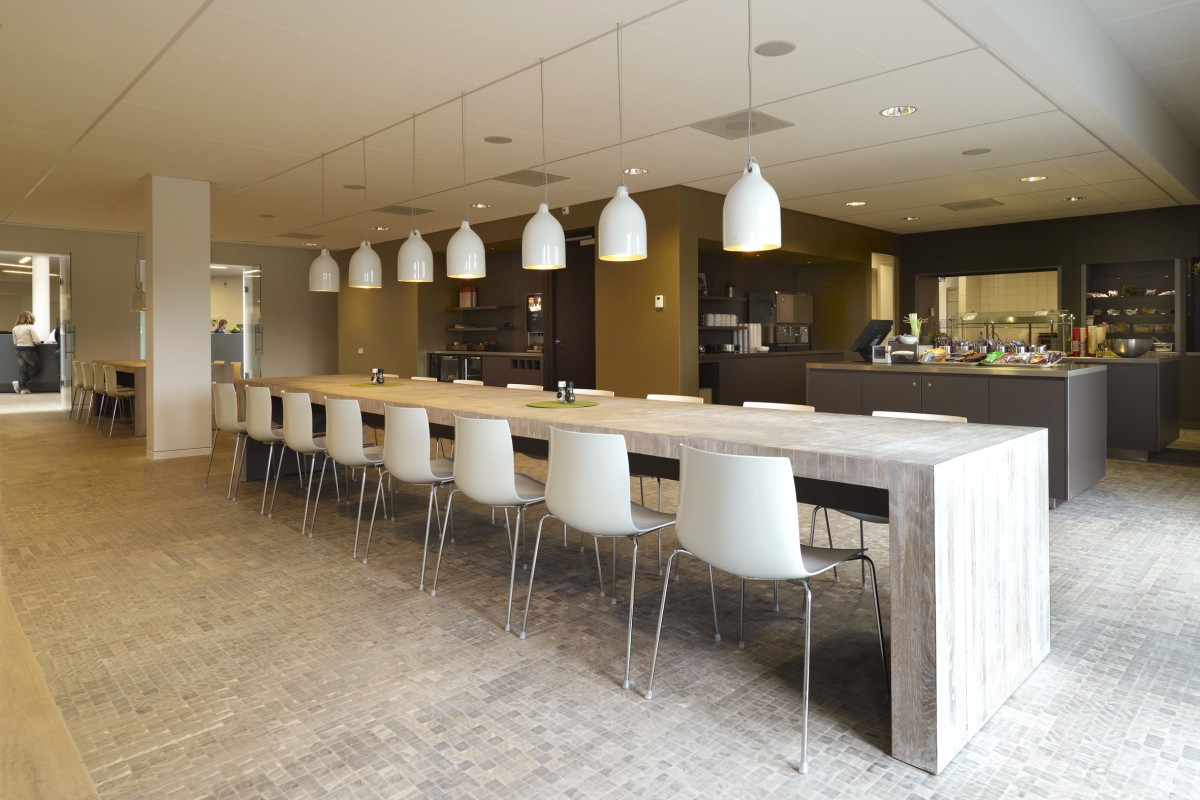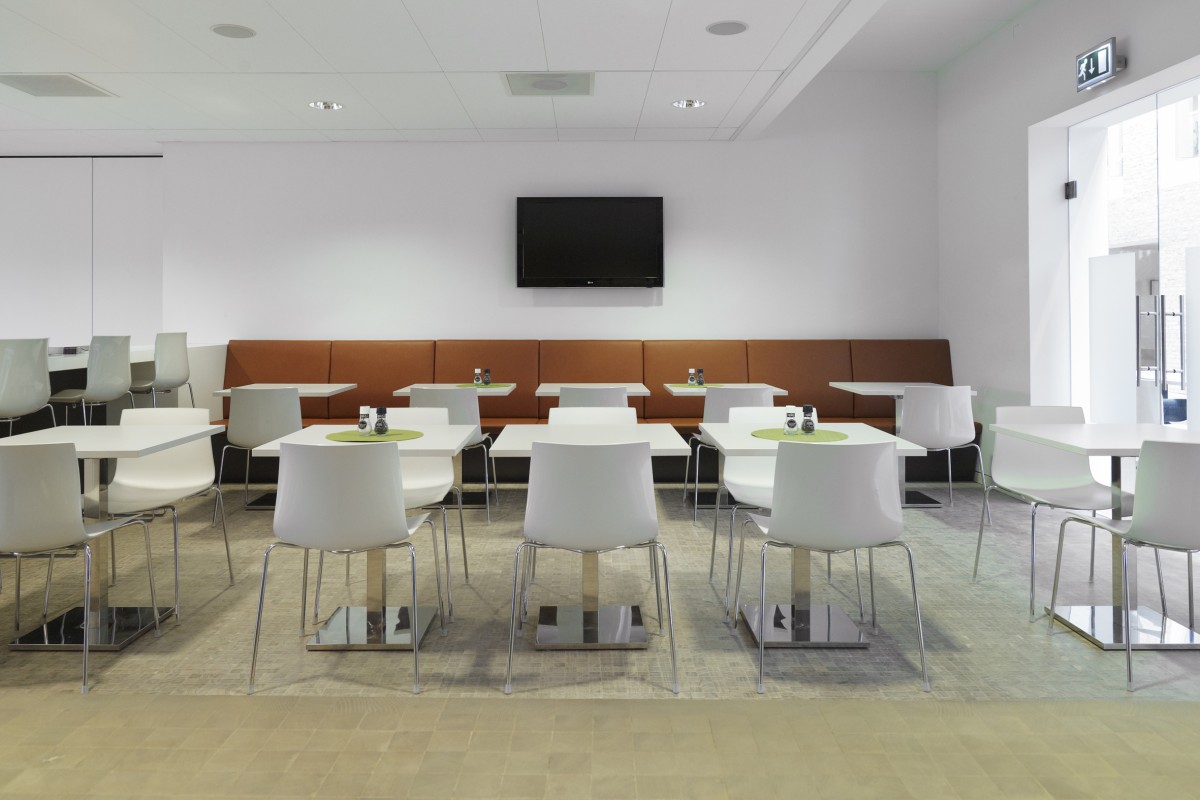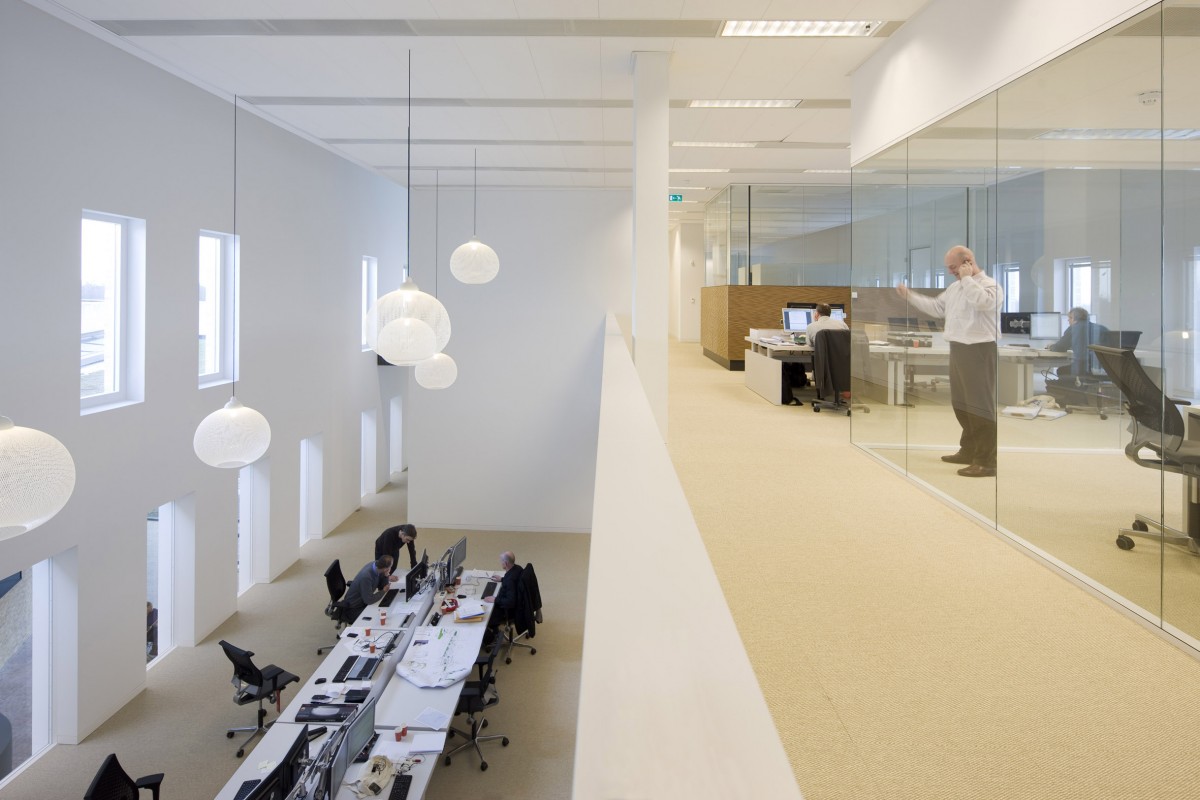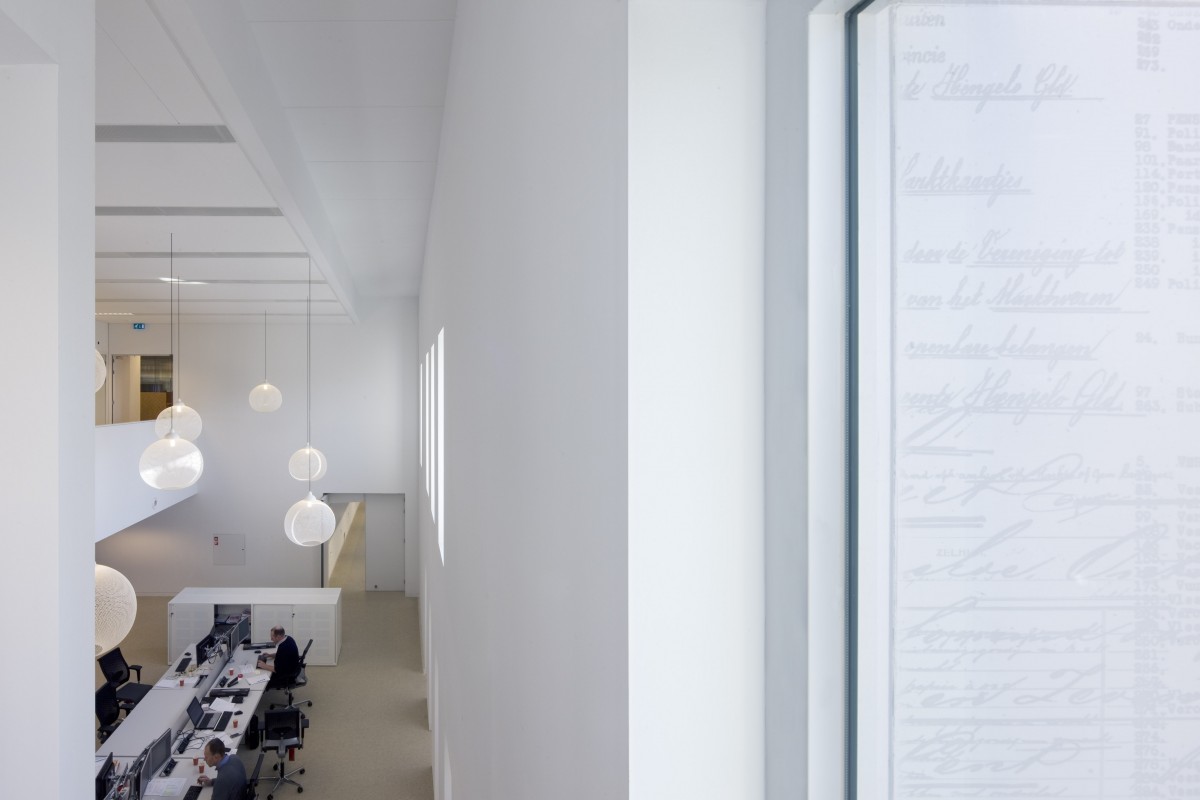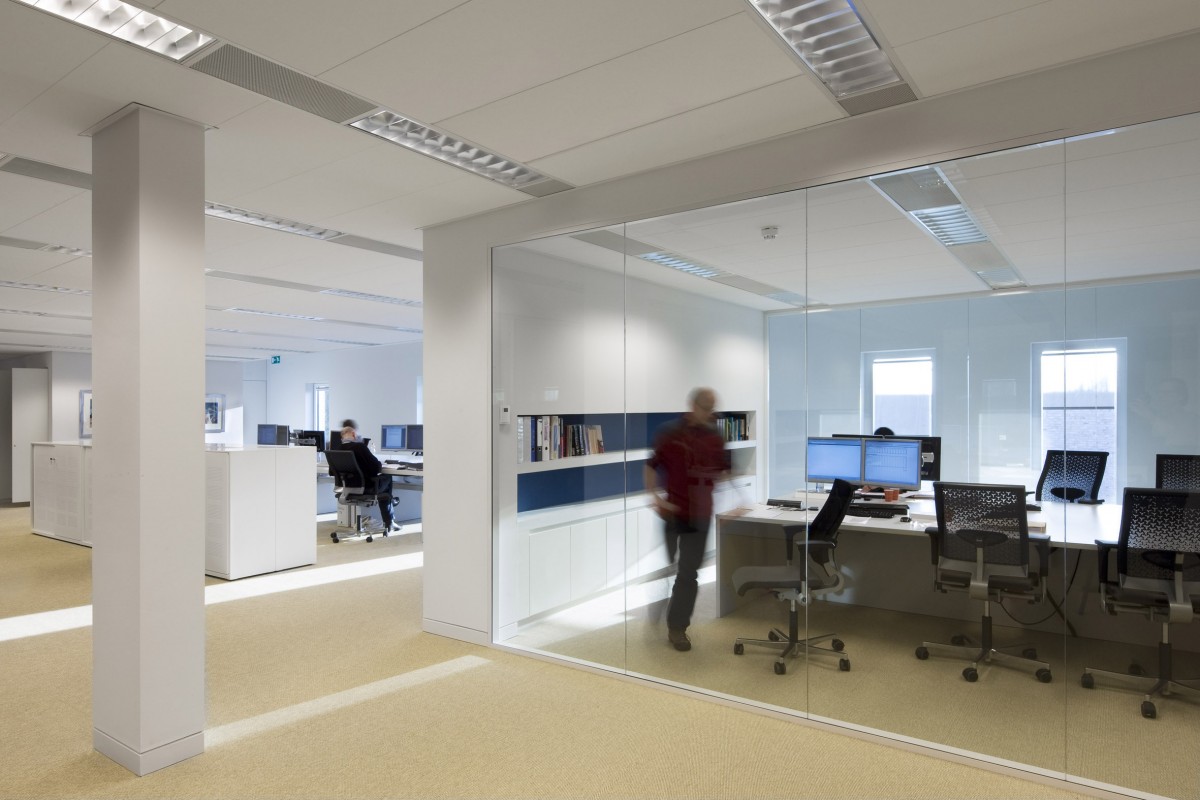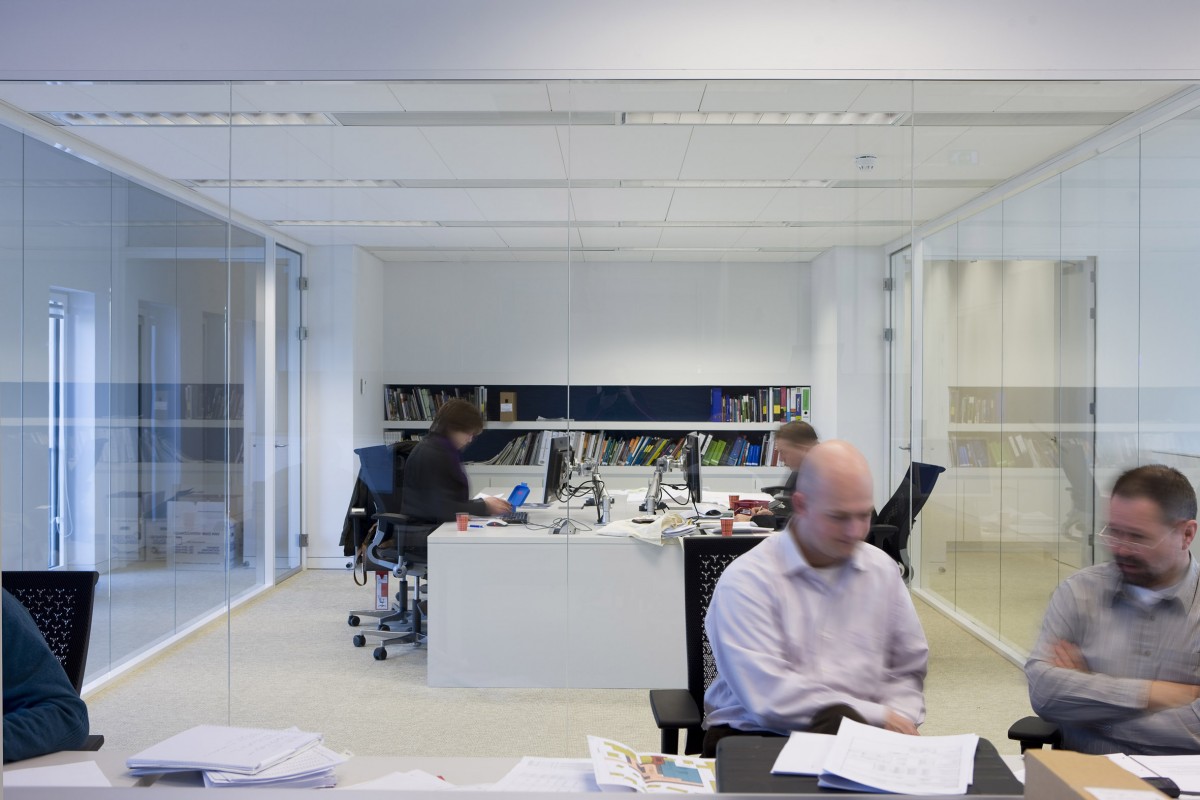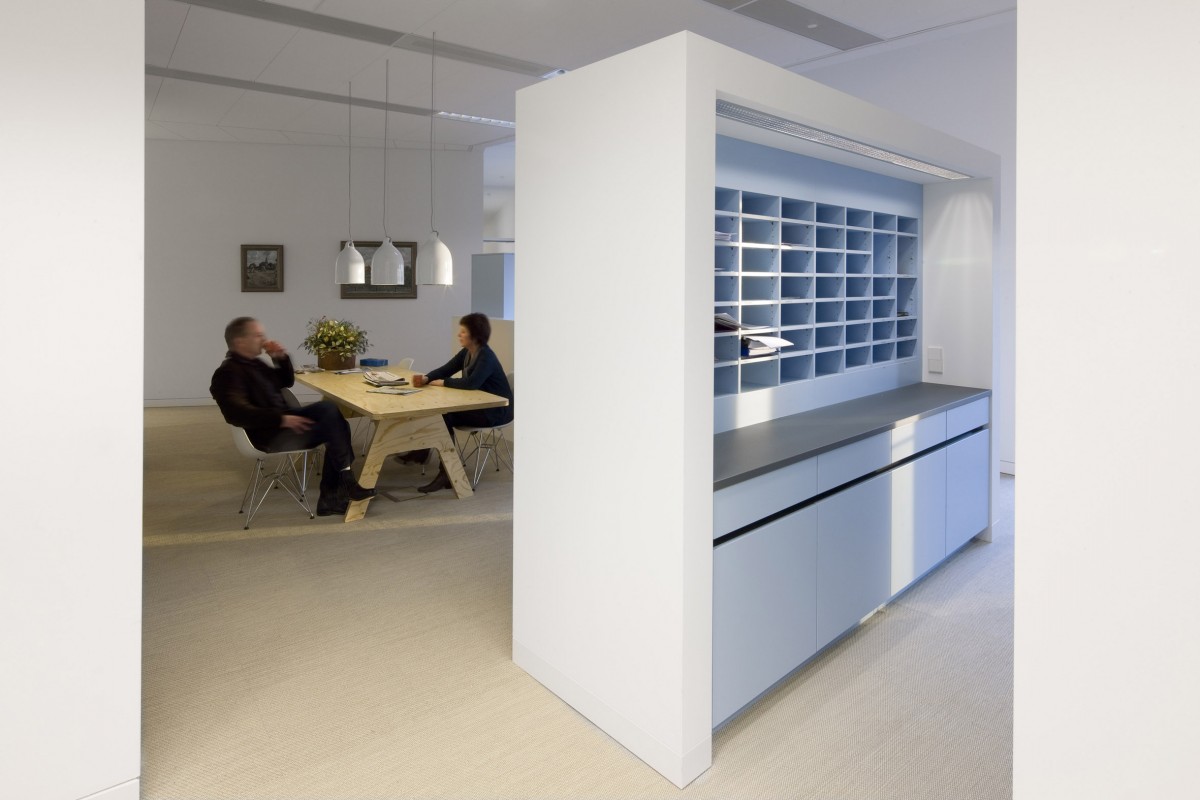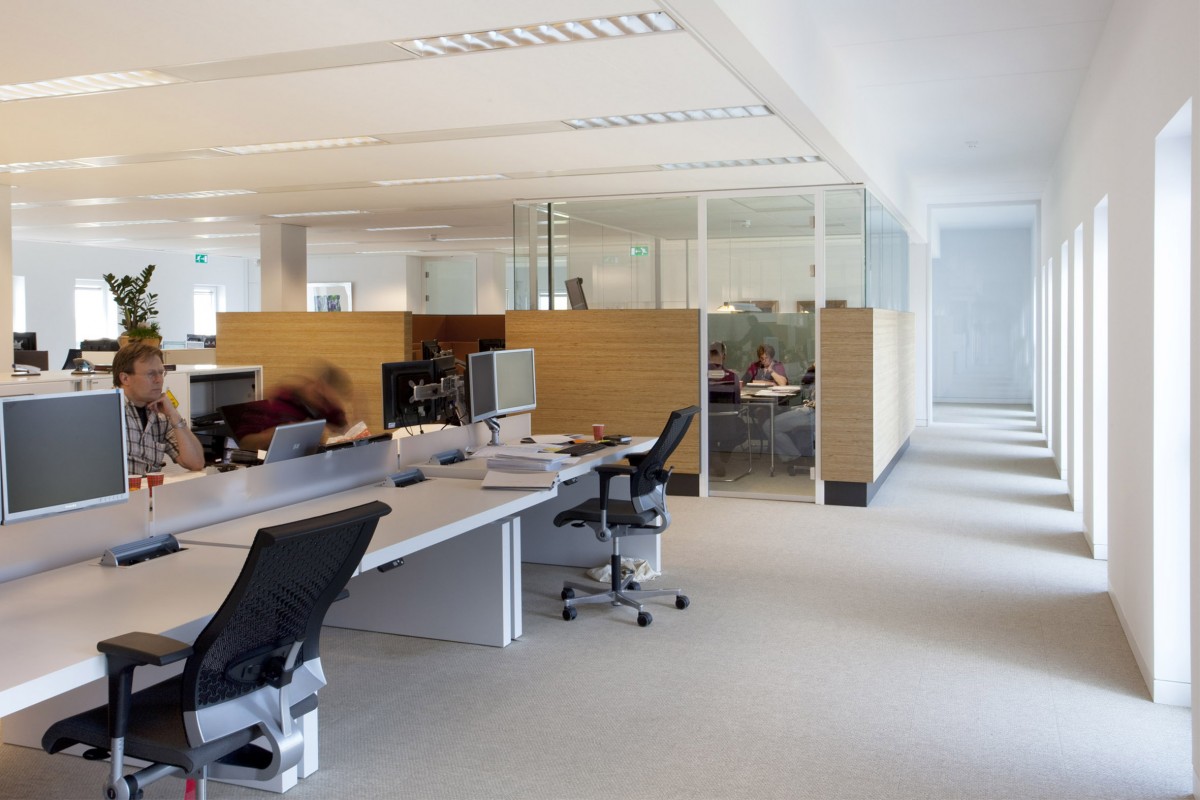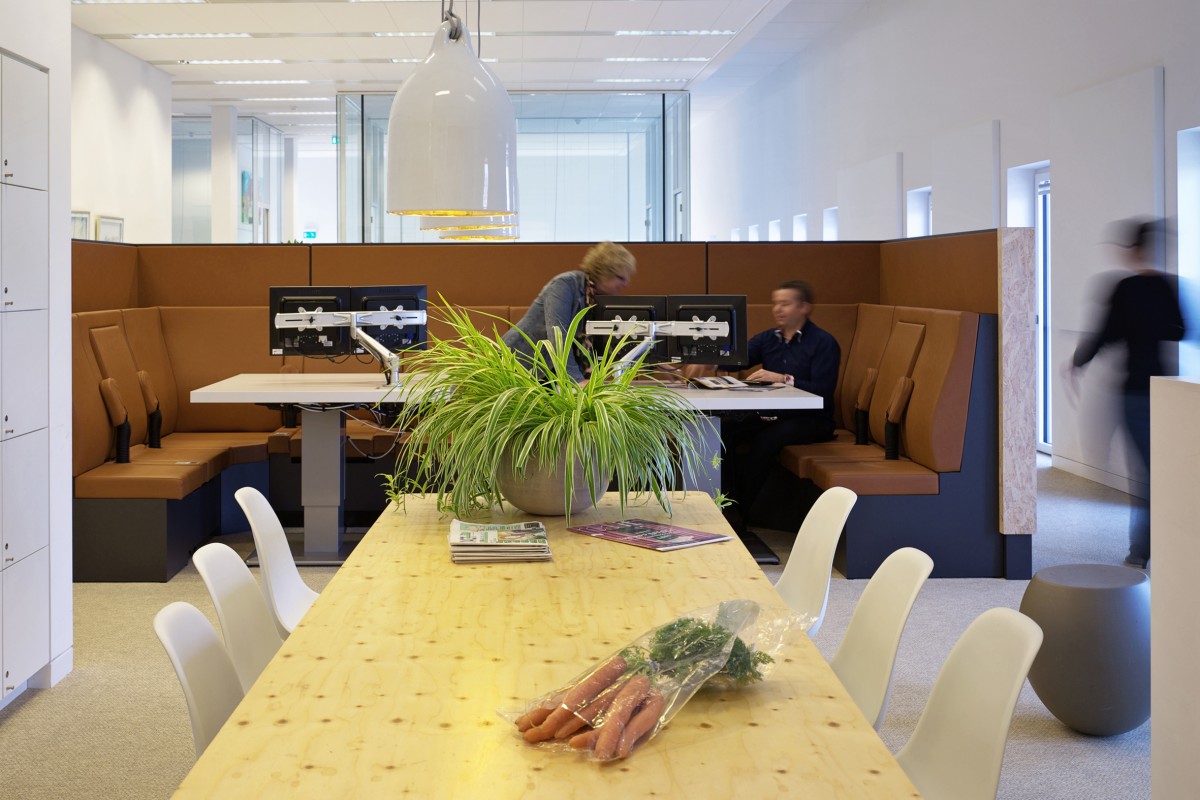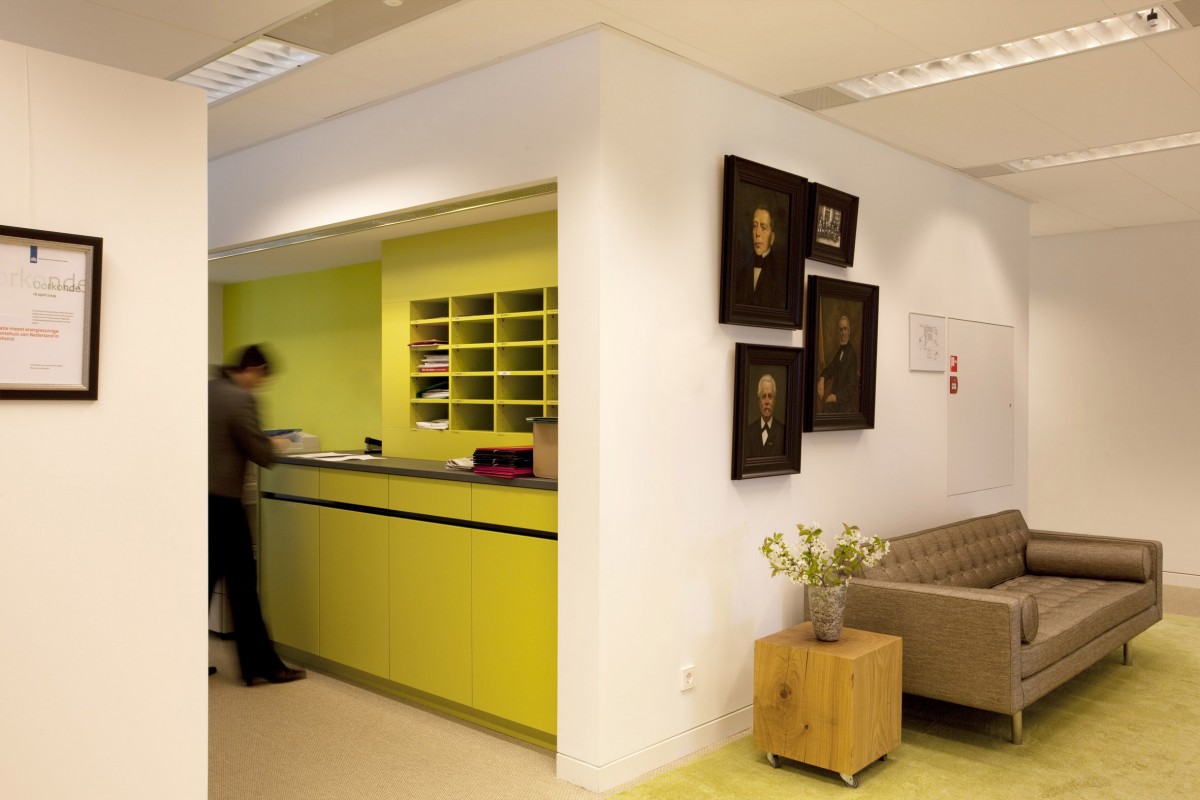On 1 January 2005, five small municipalities and about forty villages in the Achterhoek area in Gelderland were consolidated and renamed into one municipality called Bronckhorst.
City Hall Bronckhorst with office functions, conference room, reception and boardroom is a result of merging around forty villages and hamlets into the largest rural municipality of the Netherlands. It needed a City Hall which convincingly and elegantly symbolises the new administrative unit. By searching for a common denominator, the unique surroundings of the Gelderland landscape slightly sloping landscape inspired the crystallisation of the form.
The integration of the minimalistic architectural style of the Danish Dorte Kristensen and Christina Kaiser with the green landscape gave the City Hall its strong presence. Here we envisaged a harmonies relationship between the interior, the exterior and the surroundings. The interaction between interior and exterior is manipulated subtly to achieve the cohesion of mood and character. But how was this accomplished?
The two office wings, with gently sloping landscape imitating roofs, project slightly outwards and have been placed next to each other on a wedge-shaped site between the main road and a brook. The space between the wings forms the public entrance. Stepping inside the public hall it is light and spacious. Large windows provide light and air in both inner sides at the middle of the wings: a high one for the Council Chamber, a low one for the public counters. The openings frame the landscape and the interior vice versa.
In the city hall new forms of activity-related working environments are introduced. Even open workspaces are available in the public areas. Multi levels create social interaction by transparency and sight lines. Informal living rooms, where one can grab a cup of coffee and coats can be hung, are separated from the workspaces by multifunctional volumes. Throughout the building natural earth tones are present in the material. Overall a well balanced mix of ergonomic furniture and vintage living rooms make the picture complete.
Furthermore the design is special because of the consistent use of passive building techniques which has made it possible to achieve an a highly energy efficient building with a EPQ of 0.36 and the highest possible Green Calc A+ Label. To enhance the comfort of the interior the ventilation is guided by CO2-monitoring and never drops below one-third of the minimum standard. The shutters around the building are an articulated example of the intelligent application of the passive building principles which also frame the view beautifully. The principle intend to keep the excess of solar warmth outside in order to prevent the building from overheating during the daytime. At night, or when the movement of people is not detected, the shutters can close to retain warmth inside the building. The 280 insulating shutters were decorated with a relief by the artist Jaap Drupsteen. The shutters mimic a playful scene seen from the far distance.
Thanks to the balanced correlation between interior and exterior, Bronckhorst Town Hall has become a calm and peaceful place that occupies a worthy position in the scenic landscape of the Achterhoek.
publications

